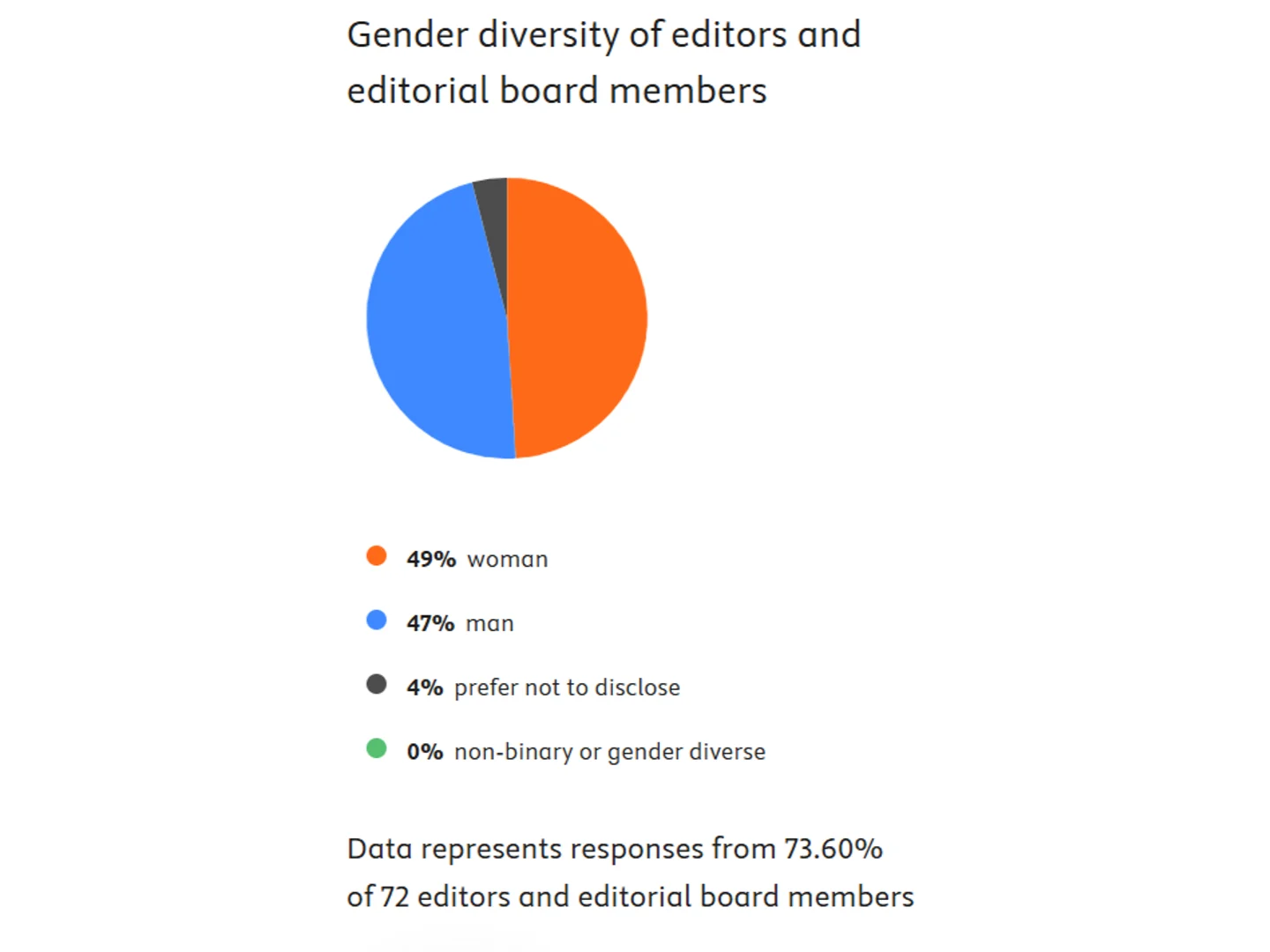Inclusion in publishing at Elsevier: an editor guide
At Elsevier, we embed inclusion into our products, processes and culture, working with our communities. It is an integral part of the research and publishing process, in collaboration with our external partners, including editors, society partners, the research community and other publishers.
This promotes innovation and development. It is crucial for rigor, quality and progress in science. It benefits not only individuals, by supporting every person to advance and excel, but also ensures more impactful research outcomes for society as a whole.
We undertake a range of activities to support inclusive research.
We know inclusion is the right thing to do. Today's researchers are addressing the most pressing challenges facing humanity. The only way to make a lasting impact is by harnessing the full contribution of every brilliant researcher, whoever they are.
Kumsal Bayazit
首席执行官
Processes & tools
We innovate our processes, workflows and tools to support inclusion throughout the publishing process.
Focus on research question and methodology
Initiatives such as Registered Reports and Results Masked Review aim for work to be judged on the merits of the research question and methodology, not the findings.
Registered Reports requires authors to submit and commit to their protocols before experiments are conducted. The journal then accepts the paper in principle, based on whether editors believe the protocol has merit, and commits to publishing the research regardless of the results.
With Results Masked Review, the experiments have already taken place, but the reviewers are first sent the paper with the results masked.
Both models seek to prevent publication bias and enhance transparency, thereby ensuring fair consideration.
Inclusive peer review
Using various sources to identify suitable reviewers helps to diversify the perspectives and backgrounds of candidates who are invited to review or join journals reviewer communities. In support of this, we provide you with a selection of tools, including Elsevier's "Find Reviewers using Scopus" in Editorial Manager.
Best practice
We strive to raise awareness and understanding, and to encourage adoption of best practice (including through policies), in pursuit of inclusion.
Self-reporting data in Editorial Manager
We pursue an evidence-based approach to advancing inclusion. In line with this, we are inviting editors, reviewers and authors to optionally self-report their data in Editorial Manager. Elsevier encourages self-reporting to increase transparency about inclusivity in journal editorial processes. The schemas used are those developed collaboratively across publishers.
Editorial teams
In 2016, we began engaging editors on the importance of inclusive editorial teams and we continue this dialogue today, for example, evaluating how we support researchers of all genders in editorial roles and seeking to learn what more we can do.
We work closely with our editors to promote transparency about editorial team diversity, and accountability to our communities. All Elsevier journals display the geographical breakdown of Editorial Boards on their journal homepages, and over 1,500 titles display self-reported gender data.

Example of self-reported gender identities of editors on the journal homepage of Psychiatry Research.
Training and guidance in your role
These articles cover the importance of inclusive peer review and best practices for you to adopt:
Training and guidance for other roles
We work to provide new and aspiring reviewers with a thorough grounding in the principles and practice of refereeing via our certified peer reviewer course offered in English and Chinese. From here they are signposted to the Reviewer Hub where they can volunteer to review for relevant journals. This plays an important role in making reviewing more inclusive.
Similarly, we continuously review and enhance guidance to provide authors with advice on how to promote inclusion in their research and publication practices. Our journals’ guides for authors are key sources of information. Our guides for authors advise on the use of inclusive language and include a section on the SAGER Guidelines which recognize the importance of sex and gender within the research itself, a dimension of analysis that has a critical impact on research quality and outcomes.
Inclusive name change policy
Elsevier’s inclusive author name change policy allows authors who need to change their name privately, e.g., for personal reasons, to update their name on previously published papers invisibly, i.e., with a resupply and no erratum / corrigendum. This policy, which is aligned with industry best practice, enables us to help protect authors’ privacy and safety, while still safeguarding the scholarly record.
Your first step
I want to get involved, where should I start?
As an editor, we hope you will check out our Editor Essentials resources. In your work as a researcher and author, we encourage you to work with your collaborators and co-authors to discuss how to support inclusion in your research and writing practice. As a helpful starting point, our "Guide for Authors" provides useful tips and best practices for inclusive writing and research.